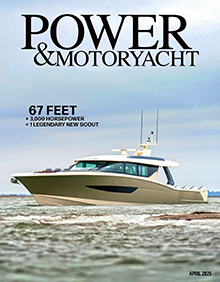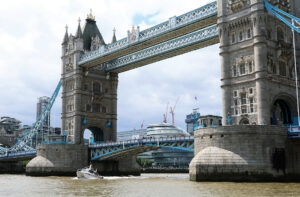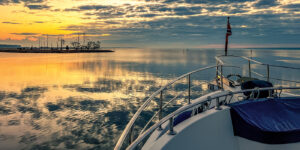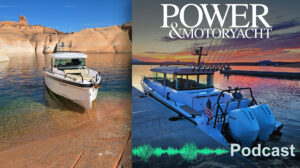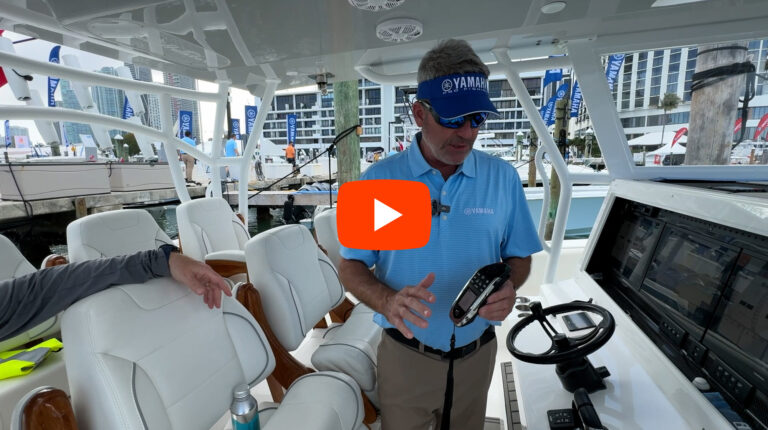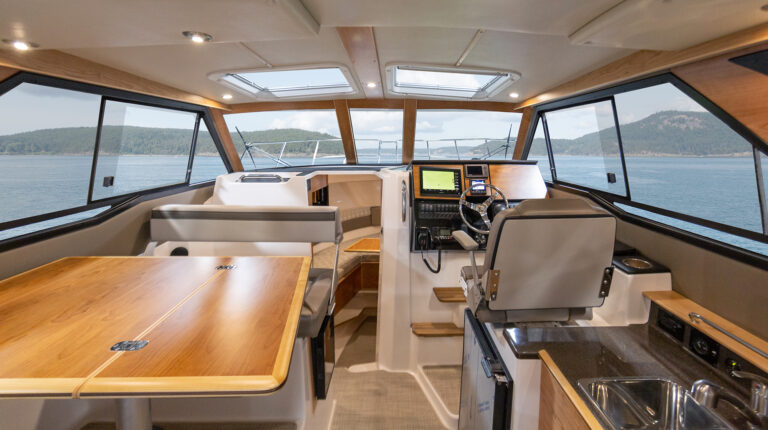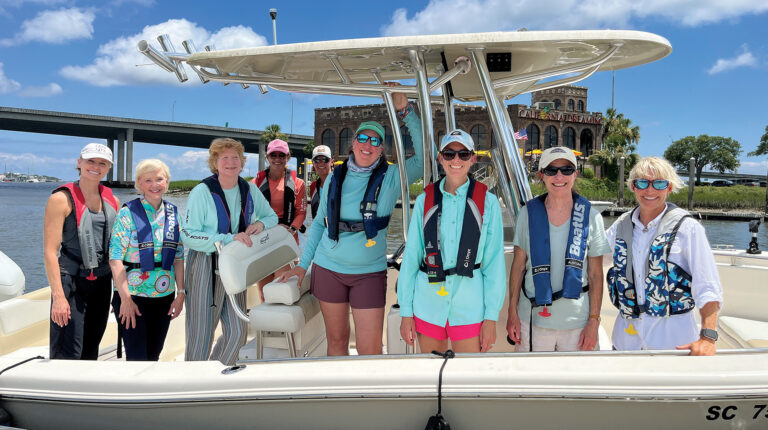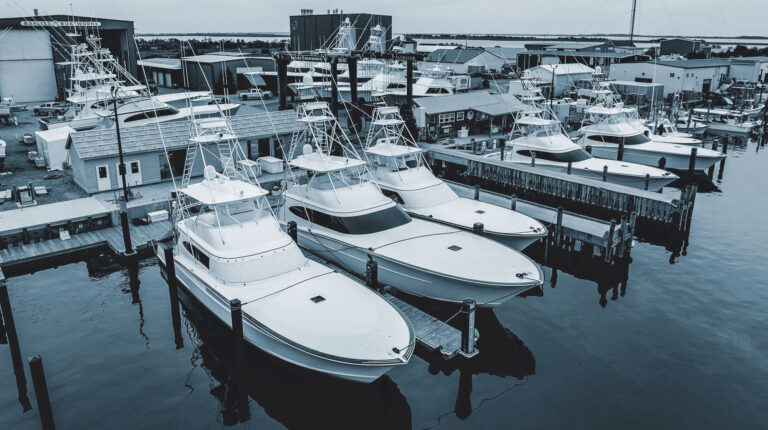Michael MacLeod has logged thousands of miles aboard the smallest C-Dorys.
We could all learn from his adventures.
As told to Chris Dixon
I’m 72, and I have done the Great Loop twice: once counterclockwise in 2019, which is the traditional way, and once clockwise. I would also include a trip I did in 2020—what I call my COVID trip.
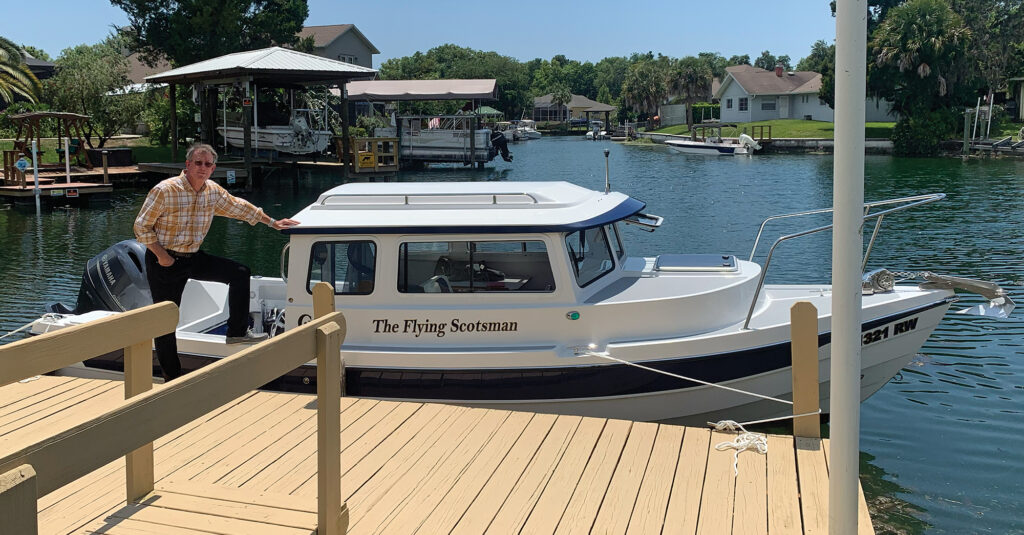
Early Days
My father was a Scottish-British diplomat. He met and married my mother in Tokyo. She was there with the American Navy at the end of the Second World War, thus the beginning of our boating life.
I was born in Bogota, Colombia, and then we lived in Turkey, Austria, Denver, Los Angeles, Hawaii, followed by a seven-year stint in Africa—Ethiopia, Mozambique and Angola. Then my father retired and promptly died of smoking too many duty-free cigarettes.
When I was younger, I was less adventurous. My father was the sort of stable, sane one who rarely did anything risky. My mother was the adventurer. And perhaps because she lived 20 years longer than him, I was more influenced by her. After my father died, my mother thought, why live in cold, rainy, windy Scotland? She had two sisters in Sarasota, so that’s where she went. Bought herself a small sailing boat, took lessons from a guy from Long Island, and they fell in love and lived together for 20 years. He was obviously very keen on boating and they used to explore all over Florida, the Bahamas. That whetted the appetite.
I found myself in the music industry, and although I have indeed studied the piano, the flute, the viola and two or three other instruments, I was never a professional musician. I’ve always been an administrator—the manager, or the Italians have a wonderful word for it: impresario. They’re the person who has the artistic concept and then knows who to hire to conduct an orchestra—where to get soloists from, where to put the concert on, what kind of hall—an opera house or a concert hall or a chamber music venue or whatever, and then get the money together to pay for it. So that’s the kind of job I have done throughout my life.
And I’ve always been a kind of an explorer. The MacLeods come from the northwest of Scotland. And my particular branch comes from an island in the Outer Hebrides called the Isle of Lewis. In the mid-1980s, I rode a pedal bicycle all the way from London to the Outer Hebrides and saw where my paternal grandfather was born and where he lived. When I use the word climb, it’s basically hiking, but I have climbed the tallest mountain in Britain, Ben Nevis. I’ve climbed Fujiyama in Japan. And I’ve decided, you know what, I’m going to climb the tallest free-standing mountain in the world, Kilimanjaro, just over 19 and a half thousand feet. Five day up, three days down.
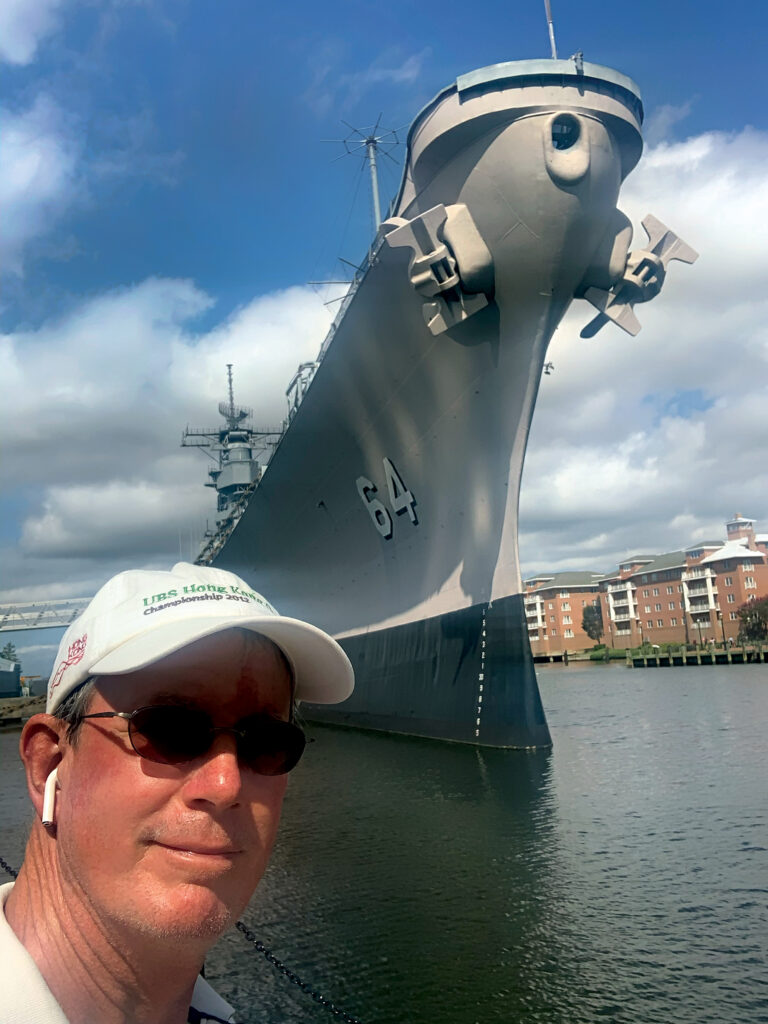
Diving into Boats
I had worked in the UK for 26 years. Then I moved to New Haven, Connecticut, and ran the New Haven Symphony Orchestra. Then I went to Cooperstown, Ohio. On this lovely nine-mile lake, there’s an opera house, and I ran the summer festival there called Glimmer Glass Opera—fantastic festival. And I thought, I should have a small boat in which to entertain conductors, singers, directors and, very importantly, potential sponsors. I used to take the sponsors out into the middle and say, in jest, would you like to get back to the mainland? On one occasion, I actually got $100,000 from this couple from Boston.
I chose a 22 foot Cape Dory. They’re made in Seattle—largely for the weather of Seattle. There’s a little cabin up front, a small cooking arrangement. If you want, a small fridge and a porta potty. You can sleep in the V berth. It’s good for one person, possible with two—no heating or air conditioning. I did a five-year stint there and trailered the boat to Albany and took it down the Hudson River and went around Manhattan, the Statue of Liberty, etc. In 2009, I trailered the boat with my then partner to Minneapolis, St. Paul, which is where Lock One is. That’s regarded as the beginning of the navigable part of the Mississippi.
On the way down there’s this fantastic Marina called Hoppies, just south of St. Louis. This wonderful woman who runs Hoppies asked, are you going down the lower Mississippi, or down the parallel waterway which has locks, marinas, fuel, but which spits you out in Mobile? She explained that the lower Mississippi flows even faster the further south you go, they’ve got barges—up to 49 tied together. And in 2009, there’s only one gas station. You can buy diesel, but it’s a 900-mile stretch. To buy gasoline, you have to beach on the banks a la Mark Twain, and then walk up to a car gas station and fill up cans. So, I chose the parallel waterway, which is called the Tenn-Tom, the Tennessee Tombigbee waterway—to Mobile. Then I was determined to get to New Orleans. And I said, how do I do this? In 2009 I had only one form of navigation, a handheld car GPS, which throughout my trip, kept on saying, “recalculating … recalculating.” So, I get to Mobile, and I asked, how do I get to New Orleans? And they said, go out to Mile Marker 12 turn right, and then put your boat due west, and stick to that. So, I did. Luck has carried me through all of my boating,
After Cooperstown, I did an eight-year stint running the Hong Kong Philharmonic Orchestra. The music business, if you’re in management, is extremely intense. I decided I don’t want to phase out of it. I’m going to go from working basically nonstop to not at all. How do you avoid being depressed and empty? I decided to do The Loop. In Cooperstown, I had a very large house on the edge of the lake with a garden. In Hong Kong, the price of property is horrendously expensive. I found this old building that had laundry hanging out of the windows that was 19 floors high. I bought a flat on the top floor; 360 square feet. I gutted the whole place and I used every single cubic inch. So, moving into a 22-foot C-Dory isn’t a problem.
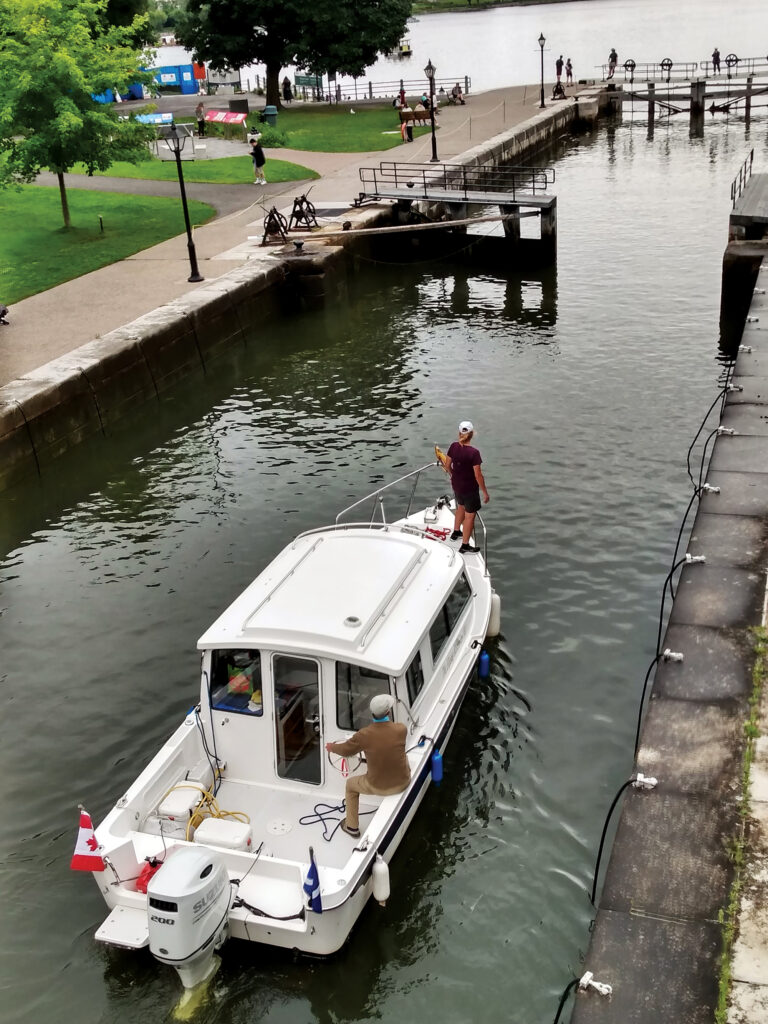
Here MacLeod and Linda are leaving Ottawa’s Rideau Canal. The outdoor helm in tight maneuvers is an important asset.
Boat Two and Loop One
I migrated to Fort Myers—found a wonderful place to live—free unlimited golf, tennis and if you have a boat, basically a free slip in a marina. I moved here at the beginning of April 2019 and picked a boat up in May. Another 22-foot C-Dory, 90-horsepower Yamaha. I didn’t have any built-in air conditioning or heating. I had two or three units—they’re kind of boxes where it gives off a little bit of cool air if you put it next to your face—that run off USB. They didn’t really do the job. I had a small electrical heater that only ran with shore power, which I could plug in to keep me warm at night in some of the colder places. There was a very small fridge with a small freezer compartment, a porta potty, a small sink. But what made this manageable was the Wallas cooker/heater. It runs off diesel or kerosene—a little tank underneath the counter with the fluid. Push a button, turn it on, lift the lid, you’ve got your two rings to cook on. If you want a heater, particularly when anchored without shore power, there’s the fan element that blows the cabin air over the heating elements. That made the trip for me.
The back of the boat had a cockpit— the outside space—let’s say seven feet by seven feet. I had a swim ladder to get in and out without having to haul myself over the side, a couple of ice boxes—big ones—two by three by two feet. I had a cable, and I kind of padlocked them inside. I also had six fenders. Because when you’re doing lots of locks, you need fenders. People don’t realize how much space fenders take. So, I was using every single cubic inch outside.
Optional extras: I toyed with the idea of a dinghy but then decided, you know what, it’s almost a dinghy anyway. And then I thought of a bike, but that is just going to get in the way, and it’s going to rust. And if it doesn’t work without a bike, get a bike. I found that some marinas have courtesy cars, so you can do your shopping and whatever. A couple occasions, I might have walked two or three miles, but being an avid golfer—and by the way, I also had my golf clubs— I would just think, well, if I have a three-mile walk to the nearest Walmart, I’ll just pretend I’m playing a round of golf. Then you take your Uber back with your groceries.
I decided on no kicker motor, either. I thought, it’s just going to get in the way. And I never needed it. What I did eventually put on the boat was a rooftop air conditioner, which was heavy, ugly, noisy. And at marinas, I don’t like disturbing other people. I didn’t like it.
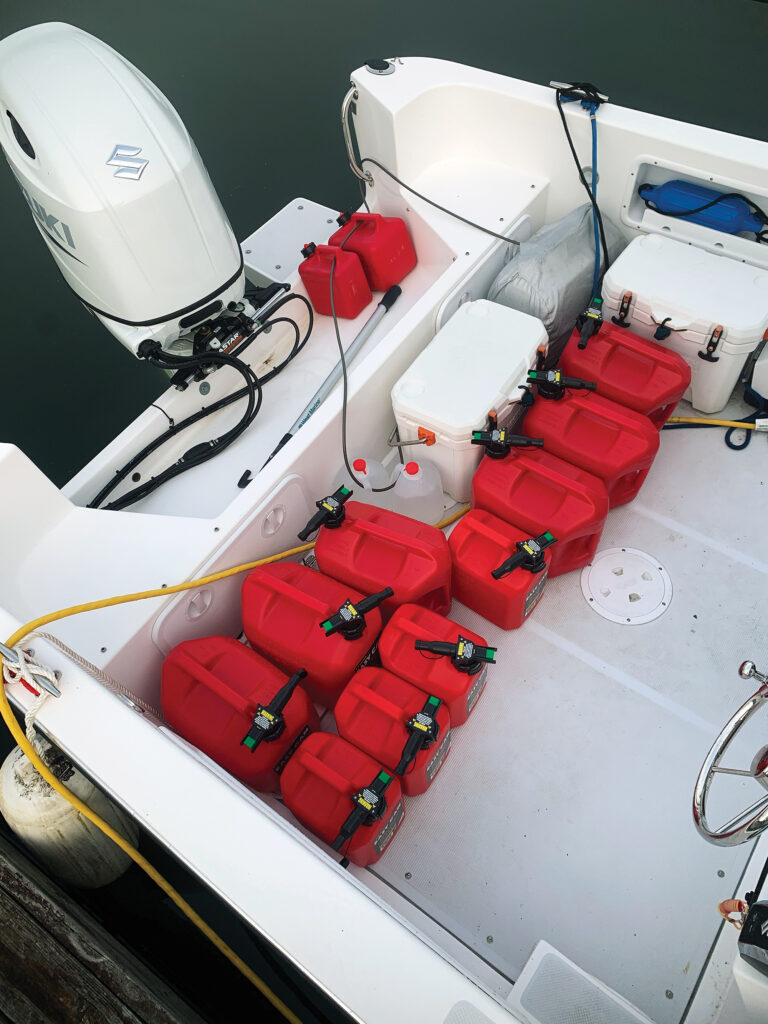
Then when you’re done, just pass them off to another Looper.
No Schedule: The Beauty of Small Boats
I set off pretty much straight away. And because I didn’t know what the Great Loop was and how complicated it was going to be and how many things might go wrong, and because I knew very few people in America, I just kept going. Because I knew so few people and didn’t know what the loop entailed, I thought I just better go the conventional, counterclockwise route. I did it in around four months.
Something I quickly learned: The bigger your boat, the further ahead you have to plan. If you’ve got a 47-foot boat, you can’t just show up at a marina at 4:30 in the afternoon and say, have you got a slip? In a small boat, they’ll find a spot for you. So, I never booked any marinas ahead of time. If you have to book spots and marinas—once you’ve committed to going to a marina—you might have booked it 10 days ahead. Suddenly the weather changes, and you might not be able to make it. My boat was called No Schedule because once you have a schedule, you’re in trouble. The smaller the boat, the more flexibility. And if you need to go fast, you can. You can duck and dive in a way that you can’t in a larger boat.
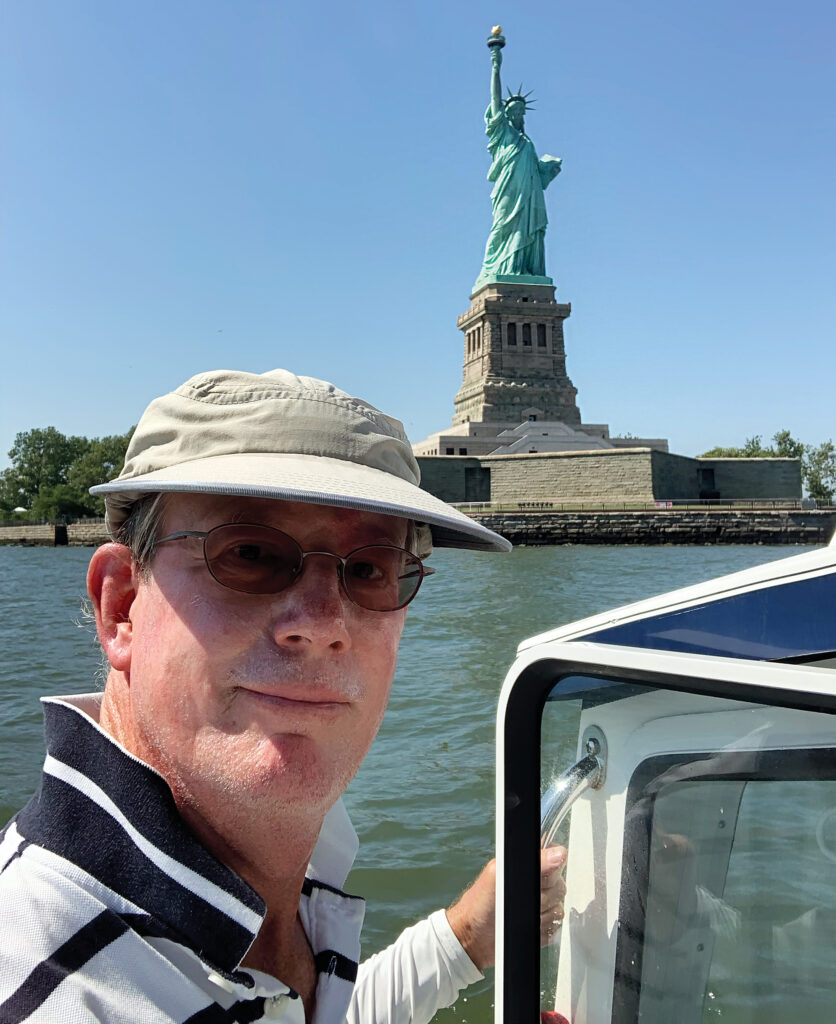
The Challenges of Navigating Solo
Remember, I did the Mississippi with a handheld car GPS. Before I set off, a neighbor who was a boater said two apps he finds useful are Windy and Navionics. The reason I like Navionics is the dock-to-dock guidance feature. You’re doing the same as you would in your car, without a voice speaking to you. Point where you want to go, it’ll give you a line to follow, and it normally doesn’t take you over waters that you shouldn’t be in (provided you’ve put in the parameters of your boat). I have no idea how I would have managed without Navionics.
Now if you’re solo, anchoring is stressful. Getting a decent night’s sleep is problematic. The first night I anchored, the water was too shallow and it was tidal; with low tide at about midnight, the boat was actually basically on the ground. On that trip I also found myself on the Illinois River too far from any Marina, so I had to anchor. I did think, should I beach? I didn’t, because I’d heard horror stories from fellow loopers who did beach, then during the night, the river would drop a foot. I’m a 22-foot boat. You can probably somehow get it off the bank, but if you’ve got a 38 or a 45 you’re in trouble. These huge barges go by 24/7. I thought, well, if there’s a sharp bend, they’re going to have to swing wide to get around the bend. They wouldn’t dare go too close to that. So, I anchored in a sharp bend. But every half hour or so, you’ve got the most powerful lights in the world beaming in—if they see an object they’re not used to, they zap their light onto it. It’s difficult to sleep with that going on. Then, what if the anchor slips and you’re asleep? If there are two or three of you on a boat, you know, then you can take shifts if you want to, while two of you can sleep for six hours and then each have a three-hour stint or whatever. Solo, it’s stressful.
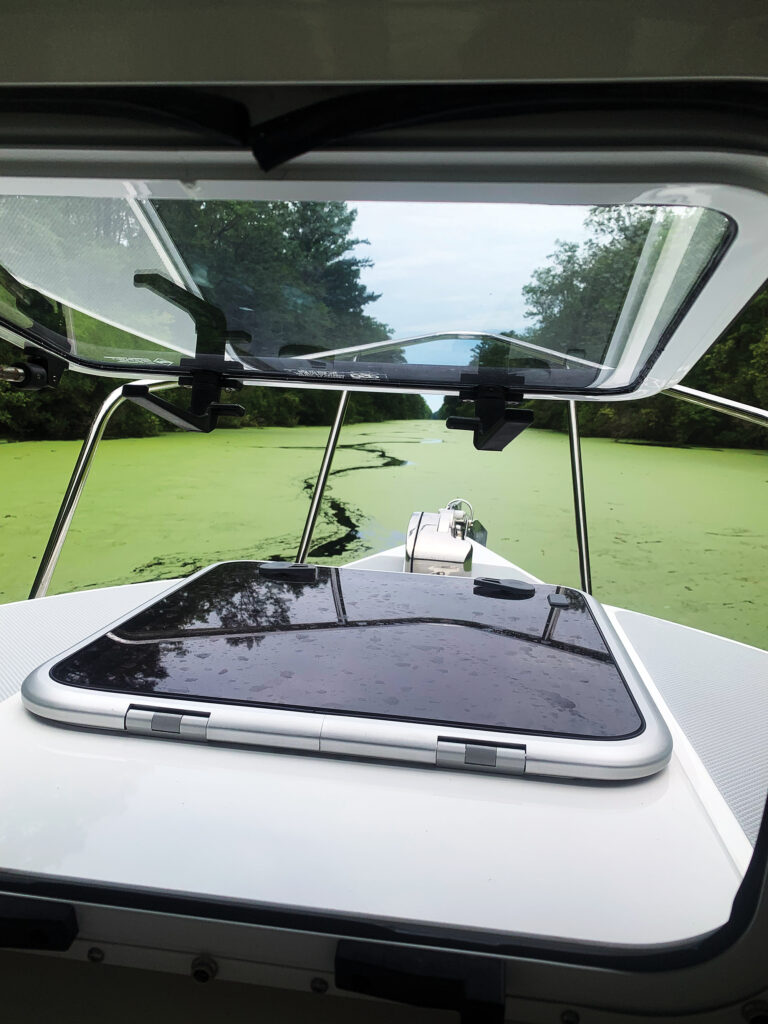
The Covid Trip
Back home, when COVID hit, none of us knew what was going to happen. I decided I was just going to get away, and I went from Fort Myers all the way up the East Coast to the Canadian border. I was at the northern part of Lake Champlain and trying to talk my way into Canada. I said, “I know that the Canadians have been allowing Hong Kongers in who want to escape the tyranny of mainland China, right?” And they still wouldn’t let me in. So, I came back down, did the whole of the Erie Canal, went to the Thousand Islands in the northeast corner of Lake Ontario. Then I took the Trent Severn waterway from Lake Ontario into Georgian Bay, a fascinating water system with 45 canals, three of which are arguably the most interesting in the world. And then I did the North Shore of Lake Huron, Mackinac Island, and then cut across the northern side of Lake Michigan and down the Wisconsin side to Chicago. From there, I wiggled my way down to Mobile to the Gulf crossing—Carrabelle to Steinhatchee—into some pretty bad headwinds. It was a bit scary, but even into the wind in my boat, I could go 30 miles an hour. For me, it was a six-hour crossing. Many loop boats take 12,18, 24 hours to get across—they don’t cross to Steinhatchee because the water is shallow. And then I thought, well, I’ve been as far north as I can go on this trip, so I’ll go as far south. I went all the way to Key West. From a mileage point of view, that was equal to doing the Great Loop.
Loop 2. Clockwise with Linda and a Wookie
A woman named Linda Andrews came into my life in Fort Myers. And, you know, the 22 doesn’t have a shower or a plumbed-in toilet. I thought, I’m going to sell the 22 and get a 25 with a 200-horsepower Suzuki, a shower, plumbed toilet and a marine air-conditioning unit.
We had a wonderful time. But you know, in the music business there’s a saying that goes something along these lines of: “Never have animals or children involved in the production, because something unexpected is going to happen.” Well, Linda came with a lovely dog called Wookie.
I did 179 locks—99.999 percent of them, you tie up or grab ropes, or whatever, on the starboard side. We got to the first lock of the Rideau Canal going due north to Ottawa, and there was no space on the starboard side to wait, just a pile of rocks. Portside was a small floating dock. So, I swung the boat around because my fenders were to starboard. But now I was facing away from the lock. The dockmaster said, “You need to be pointed towards the lock, so rearrange your fenders—some on starboard side and on port side, because I don’t know if I’m going to reef you to another boat, or tie you up on the port or starboard side.”
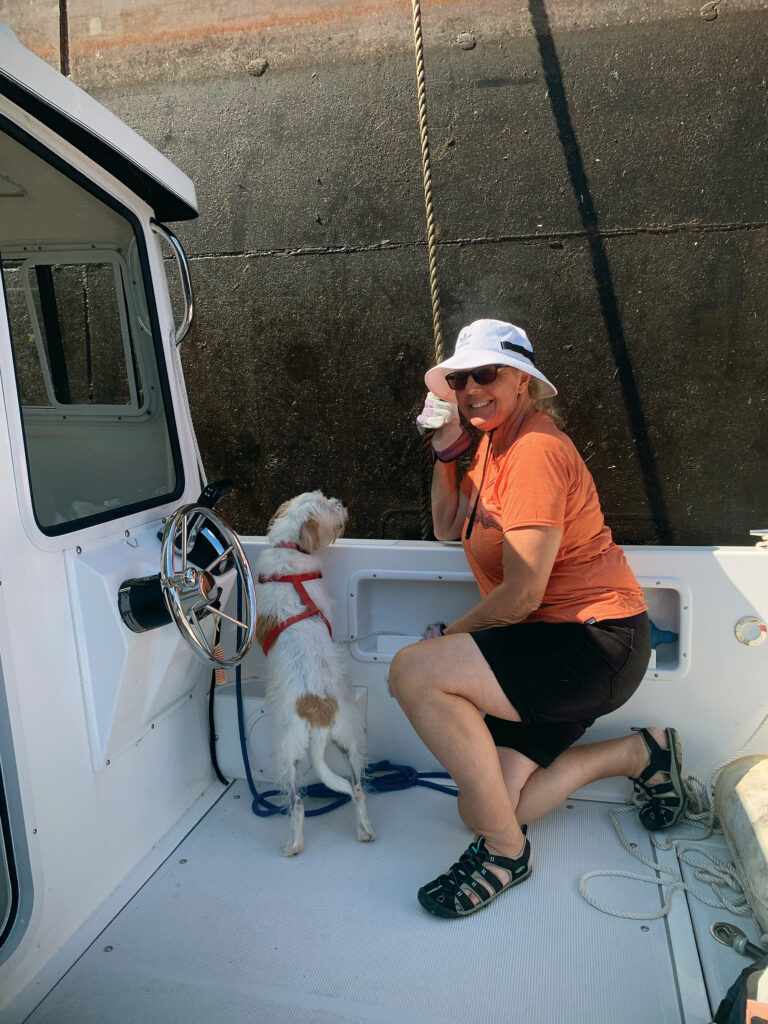
The boat was in neutral, tied to the dock, and Linda and I were on the dock, rearranging the fenders when Wookie wanted to be with us. She jumped on the throttle, putting the boat in full speed forward. The bow line broke. The bow swung away from the dock. I tried to grab the boat with my right hand. The boat won. The stern line fortunately held, but I dived onto the boat. I killed the engine by pulling the kill cord. I then killed the dog. Just kidding.
There was no damage. The stern line, if it had not held? Curtains. End of story. End of Loop. End of dog. Who knows? The only damage was to my right shoulder—two rotator cuff surgery repairs and a detached biceps tendon reattached. And I didn’t have that done until I was back in Fort Myers. So, I did the whole of this five-week trip up in Canada taking painkillers and massaging painkilling stuff into my shoulder. If you have a dog on board, you never know what they’re going to do.
Now going upstream versus downstream. The flow of the Mississippi fluctuates a bit, but on this loop, the boat was moving at 5.2 miles an hour, just drifting. The things to watch out for on big rivers, particularly the Mississippi, are logs and debris. If you’re going upstream, all the debris is coming at you faster. And here’s another advantage of the smaller boat. The Mississippi has these mysterious whirlpools. The deeper your hull, the more the boat is impacted, and they can even be spun around. But in a small boat, you’re zipping along the top—and I tended to do the Mississippi, particularly going up, at 20 or 25 miles an hour.
Savoring the Journey
One of the things about The Great Loop is that you do make friends. The second loop with Linda I did much slower—maybe six months. I savored the places and stayed longer without moving. Going from Mackinac Island to the Wisconsin side of Lake Michigan was cold. It was very windy. I was going into the wind, and therefore into the waves. It was touch and go as to whether I should even set off. But I’d made friends with this lovely couple from Wisconsin who had a 45-foot Sea Ray. I tucked in behind them, and they took the brunt of the waves and the swell, and I was kind of protected within their lee. It worked really, really well.
Another lovely couple from Tampa, I did the lower part of the Tenn-Tom with them. They had another 45-footer. At another famous Marina, Bobby’s Fish Camp, there aren’t enough docks, and so the boats raft onto each other. But with my C-Dory, I basically ran perpendicular to one of the docks and sort of tied the stern of my boat onto my friend’s boat and the bow onto a tree, but my power cord wasn’t long enough. My friends had extra power cords, and, you know, they hooked me up.
One of the most interesting friendships I’ve made is with a couple who have done the Great Loop 34 times. They have a summer base in Lake St. Clair and a winter base on Marco Island. Instead of flying each year to each place or driving, they go by boat—he’s 83!
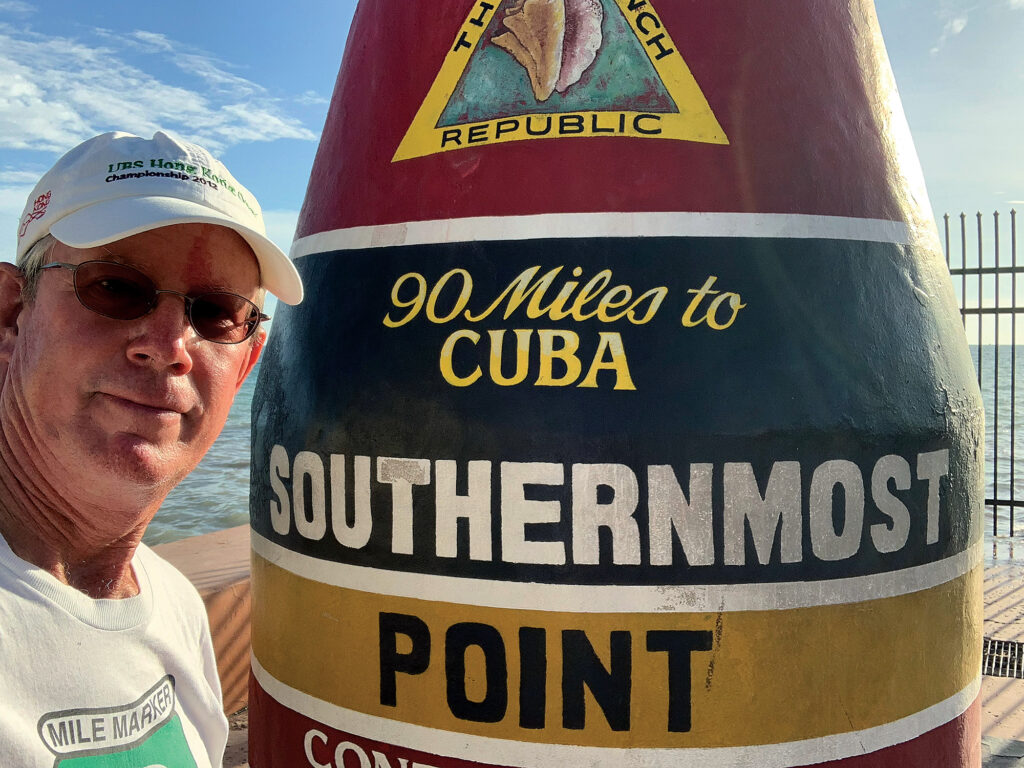
Boat Number 3
I said earlier, no boats are perfect. I’m getting a 25 and a half foot C-Dory again, but it’s a catamaran called a Tomcat. Three things I’m thinking are better than the (monohull) 25. First, the 25 has a flat bottom and a single engine, so it tends to drift. Navigating and stopping it from blowing in the wrong direction is tricky. The Tomcat will have two engines—steered with the wheel or by putting one engine forward and the other in reverse. And there’s a joystick. Pull up to a fuel dock, just switch to the joystick and then have the boat go sideways into the dock. Wookie the dog should be able to steer using her nose on the joystick. Secondly, it’s going to be a smoother ride, because this hull will cut through the smaller waves. Third, on the Tomcat, the sleeping area is the same size as a queen bed. And it has a full head.
I’m going to have two Suzuki 140s. That’s less than some people would recommend, but I like them because they’re lighter and the propeller shaft is shorter, which means that without tilting, I can go in shallower water. I don’t intend to do big open water stuff anymore. So, I’m going for quieter, shorter shaft, less expensive, because they’re not going to use as much fuel.
I’m so looking forward to the Tomcat. Somehow, I’m going to get this boat back up into Canada, and I may well take it up the East Coast, part of it with Linda and Wookie. Who knows where I’ll go. But as you know, I’m an adventurer.

